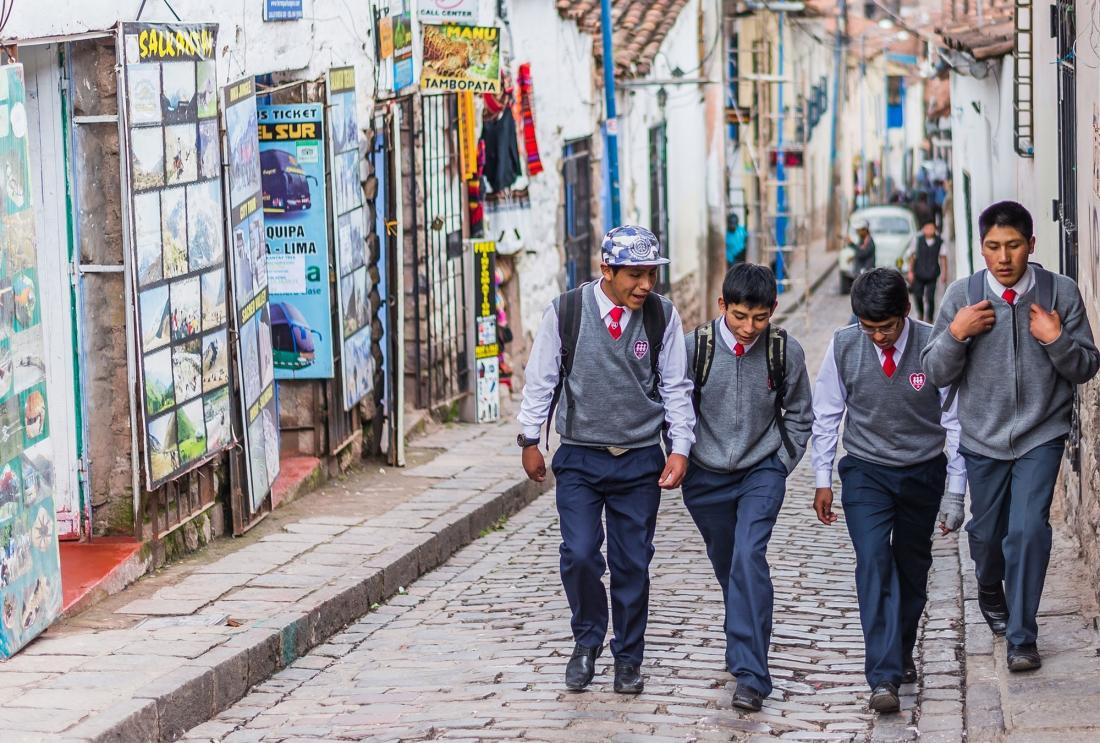Socio-Emotional Learning for At-Risk Students in Urban Schools in Lima
- Primary schools
- Secondary schools
- Students
- Teachers
- Student learning
- Violence
- Socio-emotional development
- Training
- Psychosocial support
Research suggests that children who grow up in violent environments are more likely to use aggression to resolve conflicts, and that exposure to such violence can impact student learning. In addition, some studies indicate that it is important for children to build skills that enable them to develop sympathy and empathy for others, and maintain positive relationships. However, these socio-emotional skills are rarely incorporated into formal school curricula, especially in developing countries. This study measures the impact of a government program in Peru that teaches socio-emotional skills to schoolchildren on the students’ emotional well-being, learning, life satisfaction, and long-run labor outcomes, as well as school climate.
Policy issue
Research from developed countries suggests that children who grow up in violent schools, homes, or communities are more likely to use aggression to resolve conflicts, to be disruptive in school, and to become depressed. Moreover, exposure to violence in the home or at school can decrease student health and learning, increase criminal behavior, and even decrease employment in adulthood. Developing children' s socio-emotional skills, such as self-awareness and self-discipline, could be one way to reduce the harmful affects of growing up in violent neighborhoods by helping them negotiate emotional situations. However, there has been little research on the effectiveness of such school-based programs at improving students' socio-emotional and cognitive skills, learning, or other outcomes.
Context of the evaluation
Violence at home, in school, and in communities is a problem that affects many children in Peru. Crime rates in Peru are among the highest in Latin America.1 Gang violence and petty crimes are a specific concern in Lima, the capital. About 65 percent of the schools in metropolitan Lima and Callao, a neighboring city, experience high rates of violence.According to the World Bank, the lack of socio-emotional skills among adults in Peru hinders their ability to become and stay employed.2 Moreover, this research suggests that socio-emotional skills are essential for improving the quality of life of all Peruvians, as people with higher socio-emotional skills have increased long-term income potential, improved health, are more engaged in their community, and ultimately, are happier.

Details of the intervention
Researchers partnered with the Ministry of Education to measure the effectiveness of Escuela Amiga, a large-scale government program designed to develop the socio-emotional skills of students in at-risk schools in Peru. The program will use a socio-emotional learning (SEL) curriculum developed by Peru' s Ministry of Education and the World Bank for students and teachers living or working in at-risk schools. Teachers receive a syllabus and other classroom materials designed to teach skills such as communication, empathy, learning, problem solving, and self-regulation. To help ensure the effective implementation of Escuela Amiga, the program includes:
-
A one-year university training course for teachers about SEL and how to improve school climate;
-
Teams of specialists that visit schools once a week to support teachers, students and parents in the adopting best practices;
-
After-school workshops, academic tutoring, sports, and other activities that involve parents and community actors.
The study will be carried out in 700 small and medium-sized primary and secondary public schools from 308 randomly selected clusters in 16 districts with high rates of violence. Half will be selected to receive the program, and the other half will not receive the program and serve as a comparison group.
Researchers will use surveys and administrative data to measure the effect of Escuela Amiga on students' learning outcomes, emotional well-being, and socio-emotional skills, as well as school climate, including levels of violence and bullying. In addition, the evaluation design will allow researchers to measure the program' s long-run effects on participants' labor outcomes, health, and risky behaviors, such as teen pregnancy, drug use, and gang activity.
Results and policy lessons
The new government cancelled the program before the evaluation was complete due to changing priorities.

